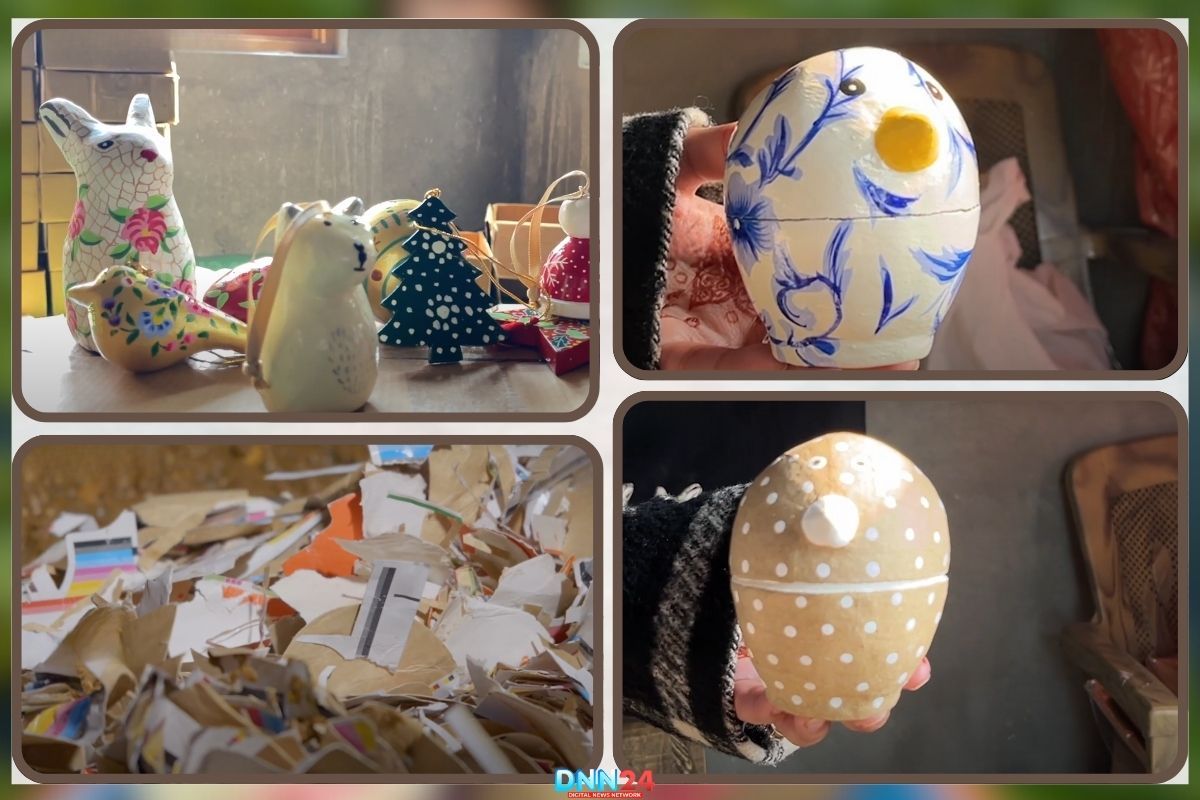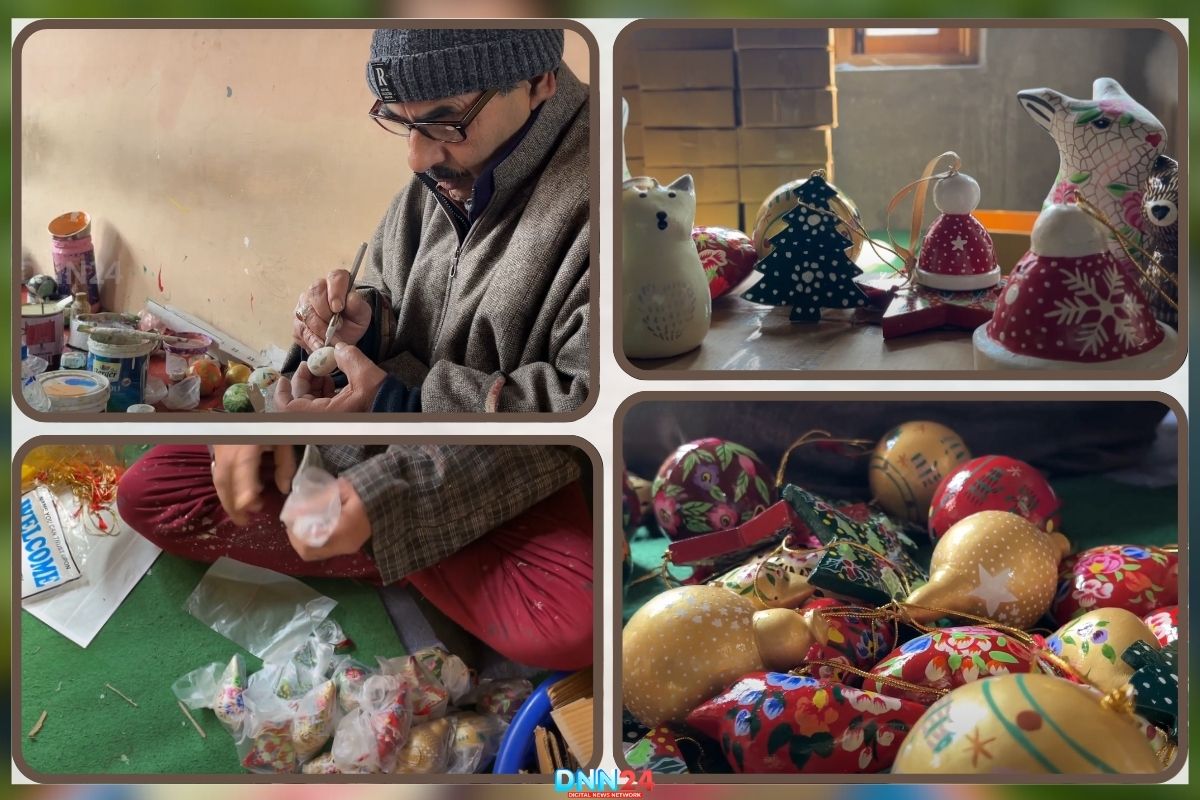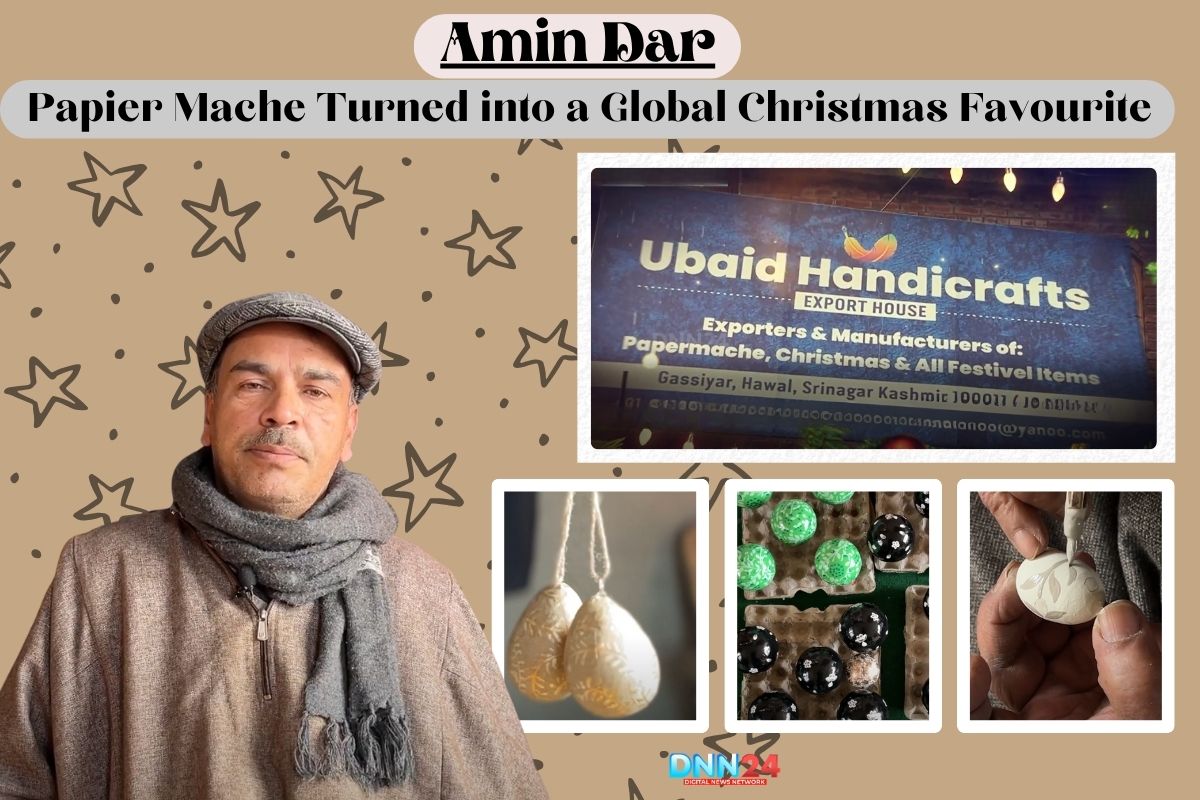In the narrow lanes of Gassiyar Hawal, Srinagar, where traditional Kashmiri life unfolds like ancient poetry, Mohammad Amin Dar sits surrounded by colourful papier-mache creations that would make even Santa Claus envious. His workshop, Ubaid Handicrafts Export House, isn’t just another craft centre – it’s a magical world where waste paper transforms into Christmas dreams. This hard-working artisan has been weaving Christmas magic with his nimble fingers for the last thirty-five years, and his decorative pieces are exported to many parts of the world.
What started as a local business supplying across India has now become an international sensation, with Amin’s Christmas balls and ornaments finding their way into homes across America, Australia, the Netherlands, and various European nations. His studio is full of an artistic vibe, where old Kashmiri art and craft combine with worldly Christmas culture, and it is true that art has no border.
Amin Dar: From Local Lanes to Famous Worldwide
The transformation of Amin Dar’s business from domestic supplier to international exporter reads like a modern-day success story that would inspire any entrepreneur. “Earlier, we used to supply all over India, but now we don’t serve the Indian market—we export to foreign countries,” explains Amin with evident pride in his voice. This business repositioning occurred when he took part in trade fairs, where he displayed his beautiful Christmas balls and hanging decorations to foreign customers.

These trade fairs now serve as his window to the world, and he is directly in touch with the foreign clientele fascinated by the exotic beauty of Kashmiri papier-mache artisanship. International market demands have been so overwhelming that Amin has shifted his business model and has solely concentrated on exports. His products now grace Christmas trees in American suburbs, Australian homes, Dutch households, and European celebrations, carrying the warmth and artistry of Kashmir’s centuries-old papier-mache tradition.
Amin Dar:The Holy Art of Paper Mache Making
There is an interesting story behind each beautiful Christmas ornament, a story that involves a mixture of the techniques of the past and precision of the present, magic made of the most ordinary materials. Amin’s creation process begins with collecting waste paper—old bills, used books, and discarded documents that most people would throw away without a second thought. This paper is soaked in water until it becomes soft and malleable, and then ground into a fine pulp using traditional methods.

The magic comes in as rice flour is added to this pulp, resulting in a moldable material that forms the basis of all ornaments. Skilled artisans then shape this mixture into perfect spheres, which are left to dry naturally under Kashmir’s mountain air. After being dried, each ball is covered with several layers of paper, and then the colouring process is performed with much care, and complex design work is carried out, incorporating the traditional Kashmiri designs and the Christmas designs. Lastly, these fragile creations are coated with protective varnish to withstand their journey to the international destinations without losing their vibrant color.
Amin Dar: Crossing Traditions Across Continents
What makes Amin Dar’s Christmas papier-mache truly special isn’t just its beauty, but how it bridges two completely different cultural celebrations through the universal language of art. Compared to the traditional Kashmiri papier mache, which has heavy and complex designs with actual gold work and can be sold at a high price of 1200 rupees and above, the Christmas papier mache is created in lighter and more affordable and reachable designs that the international customers can afford and enjoy. This thoughtful adaptation doesn’t compromise quality but makes the art form accessible to global markets, with each piece priced around ₹300-400.

Kashmiri artistic sensibilities and Christmas imagery cleverly fuse the designs, resulting in ornaments that are exotically familiar to foreign buyers. Whether it’s a Christmas ball destined for a Sydney home or a hanging decoration for a Dutch family’s tree, each piece carries within it the soul of Kashmir’s artistic heritage while celebrating the joy of Christmas. This cultural exchange has resulted in a distinct product category that is distinctive in the global markets, and this clearly shows that traditional craftsmanship can be exported to the international markets without losing its fundamentals.
Also Read: Ali Mohammad Giru: Reviving Kashmir’s Khatamband Art in Modern Architecture
You can connect with DNN24 on Facebook, Twitter, and Instagram and subscribe to our YouTube channel.

